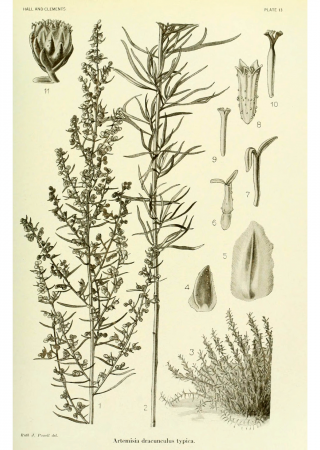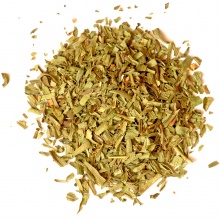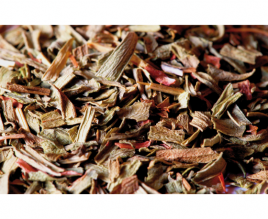Tarragon
- …in Georgia and Armenia, whole stems and leaves of tarragon are consumed, served as a side with meat or distilled spirits?
- …tea from tarragon flowers and leaves aids kidney function?
- …tarragon, along with parsley, chives and chervil is an ingredient in the French "Fines Herbes"?
- …tarragon is used as an aromatic agent in wine and vinegar, and in making mustard?
- …tarragon is recommended by folk doctors for strengthening nerves and cleansing blood?
- …chewing a tarragon leaf will cure hiccups?
- …tarragon has a bittersweet, slightly peppery aroma, with a hint of anise?
- …tarragon as a spice is the leaves and young shoots, fresh and dried of the herb Artemisia dracunculus?
Irish goulash
500 g mutton
500 g potatoes
1 tablespoon chopped celery leaves
200 g pastry leaves
1 egg
1 tablespoon chopped tarragon
1 onion
1 tablespoon butter
bouillon cube
pepper, salt
Cook cut up meat in water with potatoes, spices, onion and bouillon cube. When all ingredients are tender, place mixture in baking dish greased with butter, garnish with tarragon, cover with pastry leaf, prick with fork, spread with beaten egg and bake until red.
Tarragon was brought to southern France by French crusaders around 800 AD from Asia Minor. It is an aromatic spice, used all over the world. The translation of the Latin "dracunulus" has a meaning from mythology. It means small dragon or snake and comes from a Medieval superstition that claims keeping a sprig of tarragon in the clothing wards off the bite of poisonous animals and dragons. Its long thin leaves are probably reminiscent of a snake's (dragon's) tongue. The name Artemisia comes from the Greek goddess Artemis - guardian of virgins, because some species of this genus have abortive properties.



